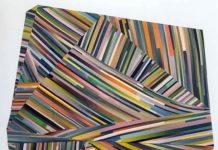It’s the last of the month, which means garden questions and
answers again! You may e-mail me questions at: ga********@*ps.net.
Or you can mail me questions in care of this newspaper. For a
faster, personal response, please include a self-addressed, stamped
envelope.
It’s the last of the month, which means garden questions and answers again! You may e-mail me questions at: ga********@*ps.net. Or you can mail me questions in care of this newspaper. For a faster, personal response, please include a self-addressed, stamped envelope.
Ants, ants and more ants. It’s obvious from a question that I answered in October that locals are having problems with ants this time of year. I’ve received several follow-ups concerning that recipe that features boric acid as ant poison, which leads to exploding stomachs on the part of ants. Doesn’t make for a pretty sight, does it? Hey, but anyone who has had thousands of ants invading their house are desperate for a solution – any solution. This concoction works in that the ants carry it back to their nests, killing the entire nest. A pest control friend of mine noted that these Argentine ants are especially hard to eradicate because there are numerous queen ants, not just one.
Anyway, several readers have had problems finding the boric acid powder that is the key ingredient. I’ve found that it’s available at some Longs, Wal-marts and Orchard Supply Hardware stores. It may be available elsewhere, too. You may have to ask for it, or look in the First Aid departments of those stores. Also, Orchard Supply sells two products that contain boric acid: Terro (which is basically the same recipe) and a product called Victor’s Roach Killing Powder. Once again, if you missed it, here’s the recipe: four teaspoons of boric acid powder, three cups of water and one cup of granulated sugar. Mix into a saucepan, bringing the mixture to a slight boil, stirring to dissolve the solids. Pour the solution into small, shallow containers, such as the caps from milk jugs or bottle caps. Be aware that you’ll have to put up with the ants for several days as they carry the poison back to their nests. Also be aware that this is poison and can be harmful to children and pets.
Q. My indoor palms have yellow speckles on some leaves. The leaves are also turning brown on the tips. What’s wrong with them? They’ve been doing great for around six months, but now aren’t looking healthy. – J.B., Gilroy, via e-mail.
A. Your indoor palms are suffering two problems. The yellow speckled leaves are caused by spider mites. If you look closely, you’ll probably even see the tiny webs. Take your palms outdoors and spray with some type of multi-purpose houseplant spray. Malathion or any other of a number of types would work. At the same time, let’s take care of your brown leaf tips. Your palms also are suffering from salt burn. Palms are particularly sensitive to excess salts in the soil.
Harmful salts in the soil are then transported to the leaf tips. These salts are in the water we use and are added with fertilizer. What you have to do is leach out the salts by flushing the soil thoroughly. Outdoors, run water through your plant several times, letting excess water drain.
Then, add a tablespoon of white vinegar to a gallon of water and flush it out again with this mixture. This will leach out most of the accumulated salts. You can use this vinegar/water solution as frequently as once a month on any salt-sensitive plants, including some outdoor ones like azaleas, camellias and rhododendrons. The vinegar neutralizes harmful salts and will lower the pH of the soil, making it more acidic and helping keep it mostly salt-free.














